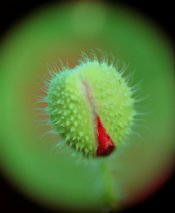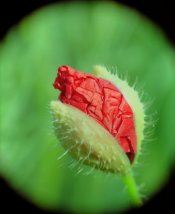I'm sure it isn't strong enough - but it should be easy enough to construct a brace out of a piece of tubing or something similar.Wow, that seems to be what I've been looking for and at a price which is hard to believe! My last remaining worry is whether the filter thread on my 110 and especially my 65 is strong enough to hold the lens.
- Home
- Forums
- Analog Workflow Forums (100% Analog/Traditional)
- Analog Equipment
- Medium Format Cameras and Accessories
You are using an out of date browser. It may not display this or other websites correctly.
You should upgrade or use an alternative browser.
You should upgrade or use an alternative browser.
Stacking lenses on MF for extreme macro
-
A
- Thread starter Rudeofus
- Start date
Recent Classifieds
-
For Sale 210mm f/5.6 Nikkor-AM ED in Copal 1
- Started by Steve Goldstein
-
For Sale FS: Horseman Long Loupe 6X
- Started by B.S.Kumar
-
For Sale Possible 65mm group buy, extra film from The Odyssey
- Started by MCB18
-
For Sale El-Nikkor enlarger lens f2,8
- Started by photogear
Forum statistics
EdSawyer
Member
- Joined
- Sep 3, 2008
- Messages
- 1,793
- Format
- Multi Format
You could probably use a factory brace like what is used for the 350 APO. They have at least 2 or 3 different brackets/braces for the RZ stuff. one for the 100-200, one for the 350, one for the 500.
I'd worry more about the lens mount on the camera than the lens itself.
I'd worry more about the lens mount on the camera than the lens itself.
About that bracket: I have none of the lenses which officially need such a bracket, although using the 43mm extension ring on my 250 and fully extending the bellows of my rz67 makes my heart cringe. I'll probably improvise a bracket with thick sheet metal soon, possibly put some sponge like material on it to avoid scratching my lenses.
EdSawyer
Member
- Joined
- Sep 3, 2008
- Messages
- 1,793
- Format
- Multi Format
Rudeofus - Check ebay and elsewhere, sometimes the brackets show up fairly cheap. THey are not all that sophisticated, mainly a long bar, drilled to mount to the tripod socket, then with a couple extensions upwards to a half-moon shaped ring that supports the lens. In the ring are a couple of rollers which allow it to be supported and move in and out without friction. It shouldn't be hard to fab something up with some bar-stock aluminum or something.
-Ed
-Ed
Just a brief update: I received the adapter and shot a roll of film with a 110mm stacked against my new 250, using the adapter ring someone recommended here in this thread. Since the 110 is relatively low weight, I used no bracket to support the setup.
I had to indeed stop down the 110, not the 250 in order to increase DOF. Stopping down the 250 on the camera only caused vignetting. Stopping down the 110 beyond F/16 also caused some vignetting. I used the new Portra 400 negative film because of its speed and exposure latitude.
What I saw through the view finder was breathtaking and I will post scanned images as soon as the film is developed. Unfortunately I had to use 1/4 s exposures on a windy day but I hope the shots will show something.
I had to indeed stop down the 110, not the 250 in order to increase DOF. Stopping down the 250 on the camera only caused vignetting. Stopping down the 110 beyond F/16 also caused some vignetting. I used the new Portra 400 negative film because of its speed and exposure latitude.
What I saw through the view finder was breathtaking and I will post scanned images as soon as the film is developed. Unfortunately I had to use 1/4 s exposures on a windy day but I hope the shots will show something.
Here are the results from my lens stacking experiments. As mentioned before, the windy weather and the flimsy setup did not exactly help with sharpness, at full resolution motion blur is quite visible. I had to grab the 110 during the shot in order to provide support to the setup and in order to stop down the lens, which also caused motion blur, especially if one does 1/4 to 1/2 second exposures. If the 110 is stopped down, a certain amount of vignetting also occurs as shown by the images.
My conclusions are: since the inversion ring was really cheap and since I had the 250 and the 110 anyway, this setup was an interesting learning experience for stepping into the macro world.
PS: I love the new Portra 400 for its color rendering and latitude!
My conclusions are: since the inversion ring was really cheap and since I had the 250 and the 110 anyway, this setup was an interesting learning experience for stepping into the macro world.
PS: I love the new Portra 400 for its color rendering and latitude!
Attachments
EdSawyer
Member
- Joined
- Sep 3, 2008
- Messages
- 1,793
- Format
- Multi Format
Nice! thanks for sharing. I will try some experiments like that soon too probably. Agreed, stabilizing the rig is the hard part, probably. Some sort of custom bracket would probably be the ideal solution, or maybe 2 tripods or something.
-Ed
-Ed
If you want to proceed with a setup like this, here is my advice:Nice! thanks for sharing. I will try some experiments like that soon too probably. Agreed, stabilizing the rig is the hard part, probably. Some sort of custom bracket would probably be the ideal solution, or maybe 2 tripods or something.
- Supporting the lens is one thing, but you also need to take care of closing the aperture on the stacked lens. This is what probably caused the most shake in my setup.
- Think about using a flash for lighting as this macro setup needs a lot of light.
- As with all macro setups alike, DOF will be razor thin. I used F/22 on my 110 lens and still got too little DOF as the example pics show
Before I took my shots I used a fake TTL technique to guestimate the required exposure compensation. For this I placed the camera opposite to a wall and compared the meter readings with reflected light meter readings through the view finder (protected against stray light with a dark cloth). Here are my rough compensation values (250mm wide open, 110mm stacked against it and progressively stopped down):
F/2.8 -> 4 EV
F/5.6 -> 5 EV
F/11 -> 8 EV
F/22 -> 10 EV
F/32 -> 11 EV
Due to the high inaccuracy of my setup I would take these values +/- 1EV, but that's still plenty accurate for negative film. The EV compensation values are the difference between direct meter reading of the subject and what you should set your camera to to get a proper exposure.
EdSawyer
Member
- Joined
- Sep 3, 2008
- Messages
- 1,793
- Format
- Multi Format
Thanks for the info! good to know. I was thinking of taping down the DOF preview lever on the reversed lens - did you do that for stopping down?
For light I was thinking of modifying an Olympus T-28 dual-head macro flash I have. I'd have to modify the bracket to fit, somehow, but it could be doable. It has a thyristor so could be some sort of auto-exposure solution possibly... we'll see.
I have the tilt-shift adapter. Perhaps that could be useful to extend DOF. Talk about crazy-ass rig though. Wow... that's going to be crazy to try to stabilize all that....
Thanks for the compensation info too! I was figuring on using polaroids possibly to get some sort of ballpark exposures. Ideally I'd like to find a combo of lenses that don't vignette.
-Ed
For light I was thinking of modifying an Olympus T-28 dual-head macro flash I have. I'd have to modify the bracket to fit, somehow, but it could be doable. It has a thyristor so could be some sort of auto-exposure solution possibly... we'll see.
I have the tilt-shift adapter. Perhaps that could be useful to extend DOF. Talk about crazy-ass rig though. Wow... that's going to be crazy to try to stabilize all that....
Thanks for the compensation info too! I was figuring on using polaroids possibly to get some sort of ballpark exposures. Ideally I'd like to find a combo of lenses that don't vignette.
-Ed
I have to admit that I held the preview lever with my hand, which may also explain the blurriness of my shots.I was thinking of taping down the DOF preview lever on the reversed lens - did you do that for stopping down?
My recommendation would be to use a powerful flash rig as this setup really needs a lot of light. I shot Portra 400 in late afternoon light and hat 1/2 second exposures ...For light I was thinking of modifying an Olympus T-28 dual-head macro flash I have. I'd have to modify the bracket to fit, somehow, but it could be doable. It has a thyristor so could be some sort of auto-exposure solution possibly... we'll see.
Mmmmmh! T&S adapter ...I have the tilt-shift adapter. Perhaps that could be useful to extend DOF. Talk about crazy-ass rig though. Wow... that's going to be crazy to try to stabilize all that....
EdSawyer
Member
- Joined
- Sep 3, 2008
- Messages
- 1,793
- Format
- Multi Format
Given the working distance on a rig like this (short!) and the proximity of the flash (close!) even a smallish dual-head flash rig like Olympus T-28 should work ok. The trick will be mounting it. I don't think a 77mm->55mm stepdown is going to cut it... (maybe it would? but I'd suspect vignetting issues). Hopefully I can fabricate some sort of bracket. Getting the thyristor sensor in a good location will be tough too.
Diapositivo
Subscriber
Before the advent of TTL-flash the standard way of doing field-macro was to have one bracket with a flash and another bracket with a white reflector, or two brackets with flashes, or some aluminium foil around the lens and making a reflector on the side opposite the flash.
The flash would always fire at full power because light is never too much and DoF is never enough.
Forget diffraction: DoF for macro is better than absolute sharpness. F/22 is normal.
The right aperture would be determined by tests, and the closer the better if you have a setup that allows to maintain automatic diaphragm closure;
The focus plane would be fixed, as in the field it is a bit risky to recalculate flash position, reflector position, aperture etc.
So you would have this kind of "gun" composed by camera, lens, brackets, flash, reflector, set for a certain fixed magnification ratio, such as 2:1 and then you would go in the field hunting subjects always taking pictures at 2:1 and focusing by moving the entire gun.
In the field, you would concentrate solely on subject and focus.
You would preferably use a tele lens if the interest is for insects, as those, unlike plants, have this nasty habit of flying (or jumping) away just between the moment you focus and the moment you are taking a picture.
EDIT If this message seems to have no purpose, the purpose is to suggest to forget flash auto-exposure with a separate sensor. Those exist (at least Panasonic IIRC made a flash which could accept a separate thyristor sensor) but waste flash power and DoF. The double bracket solution prevents taking pictures at different magnification ratios in any case, so for a certain field setup the focus is "fixed" and better it is to use flash at full power using a pre-determined small aperture.
The flash would always fire at full power because light is never too much and DoF is never enough.
Forget diffraction: DoF for macro is better than absolute sharpness. F/22 is normal.
The right aperture would be determined by tests, and the closer the better if you have a setup that allows to maintain automatic diaphragm closure;
The focus plane would be fixed, as in the field it is a bit risky to recalculate flash position, reflector position, aperture etc.
So you would have this kind of "gun" composed by camera, lens, brackets, flash, reflector, set for a certain fixed magnification ratio, such as 2:1 and then you would go in the field hunting subjects always taking pictures at 2:1 and focusing by moving the entire gun.
In the field, you would concentrate solely on subject and focus.
You would preferably use a tele lens if the interest is for insects, as those, unlike plants, have this nasty habit of flying (or jumping) away just between the moment you focus and the moment you are taking a picture.
EDIT If this message seems to have no purpose, the purpose is to suggest to forget flash auto-exposure with a separate sensor. Those exist (at least Panasonic IIRC made a flash which could accept a separate thyristor sensor) but waste flash power and DoF. The double bracket solution prevents taking pictures at different magnification ratios in any case, so for a certain field setup the focus is "fixed" and better it is to use flash at full power using a pre-determined small aperture.
Last edited by a moderator:
xtolsniffer
Member
I have some experience with stacking lenses on 35mm, but the results are never that good compared with extension to my eyes. Plus you end up with very limited working distance. I do use a RB67 with a 140mm macro mounted on the short and the long extension tubes together, giving about 1.2x. If you want to go higher, the 90mm with both tubes will take you to almost 2x. With that size of kit and that magnification, even finding the subject, let alon framing it is hard. Mind you, with the quality you get from 6x7, enlarging a 1:1 shot to say 12"x16" print is really really spectacular!
| Photrio.com contains affiliate links to products. We may receive a commission for purchases made through these links. To read our full affiliate disclosure statement please click Here. |
PHOTRIO PARTNERS EQUALLY FUNDING OUR COMMUNITY:  |




